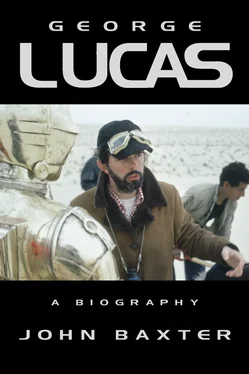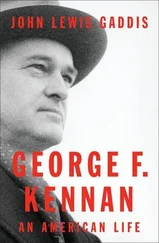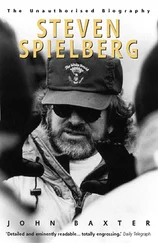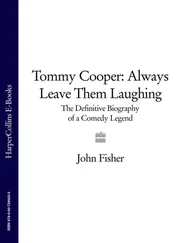1 ...7 8 9 11 12 13 ...33 As cruising petered out in the early hours, more aggressive drivers peeled off and headed to the long, straight roads on the edge of town, where they could prove just whose car was the fastest. A mythology grew up around these dawn races, which Lucas celebrated in American Graffiti . In the film, they take place on Paradise Road – a real Modesto thoroughfare, but too twisty, locals agree, for racing. Dragsters preferred Mariposa Drive, Blue Gum Avenue, or, best of all, Rose Lane, where painted lines marked out a measured quarter-mile. The film showed drivers gambling their registration papers – ‘pink slips’ – though this was almost unknown: even a $20 side bet was daring. Most kids didn’t own the cars anyway: ‘You’re racing your daddy’s car tonight,’ was a favorite gibe – used by Harrison Ford as Bob Falfa in American Graffiti when he challenges John Milner. If parents bought a second car for their kids, they normally retained title. Most kids simply cruised in the family Chevy or Ford, the automatic transmissions of which they wrecked in a few months by intemperate ‘peeling out’ at high speed from the kerb, or by racing.
The bad boys of the car culture were the gangs. Modesto already had a hot-car club, the Century Toppers, which went back to 1947 and was led by Gene Wilder, later a prominent professional customizer. A car modelled on his chopped Mercury, the roof so low that the windscreen is barely a slit, features in American Graffiti , but Lucas preferred to confer immortality on a later and raunchier gang, the Faros, archetypal juvenile delinquents who hung out at a burger joint called the Round Table.
In American Graffiti , the Pharaos (sic) and their slow-talking, gum-chewing leader Joe, played by gangling Bo Hopkins, are every mother’s nightmare, in glitzy satin jackets and skin-tight jeans. They kidnap Curt (Richard Dreyfuss) and put him through an initiation rite that involves hooking a chain to a police car and ripping out its back axle.
Surviving Faros reject this characterization, and deny charges that they instigated fist-fights or poured gasoline onto roads and set it afire. ‘We never got in trouble,’ insists Ted Tedesco, one of three brothers, all foundation members of the Faros when the gang formed in 1959. To hear the Tedescos and other ex-members like Marty Reiss tell it, the Faros were just decent kids high on the car culture. ‘I don’t think more than five people smoked cigarettes,’ says Reiss. ‘Nobody was on drugs. Any obscenity, including “Hell” and “Damn,” was punished by a swat from the club paddle, as was spinning your tires within two blocks of the clubhouse.’ They’re silent, however, about Lucas’s accusation that though he was never a member, they used him as a stooge, sending him in to enrage other gangs who, when they chased the pint-sized troublemaker down an alley, found themselves facing the Faros armed with bike chains.
Lucas was right, they agree, about initiations, but they deny ever having done anything as drastic as trashing a police prowler. (Lucas insisted ‘some friends’ did try this trick one Halloween, but without the film’s spectacular result: ‘The car just sort of went clunk, and it was really very undramatic.’) The worst a potential member might endure was being rolled through a supermarket on a trolley, dressed only in a diaper, or being blindfolded and forced to eat dogfood, or a live goldfish – and even then, they insist, the fish was replaced by a piece of peach. ‘That was the big, tough club,’ says Reiss, now a respectable local businessman, like most other members. The Faros’ last president, Marty Jackman, even became the local representative of the Sierra Club.
As a teenager, Lucas wanted to join the Faros, or at least win their acceptance. He let his hair grow even longer, fitted silver toecaps to his pointed boots, and wore black Levi’s that remained unwashed for weeks at a time. Nagging his parents finally got him a car, a tiny Autobianchi, nicknamed, when Fiat bought up the company, the Bianchina. It had a two-cylinder engine, hardly more powerful than a motorbike, and with an appalling clatter. Even then, there was a trade-off: George would become the delivery boy of his father’s business.
Lucas was grateful and resentful at the same time. He had a car, but it was barely a car. It had ‘a sewing machine motor in it. It was a dumb little car. What could I do with that? It was practically a motor scooter.’ Some of his humiliation would pass to Terry the Toad in American Graffiti , forced to bumble about on a Vespa. The deal with his father to work at the store didn’t last long. George was expected to haul large, heavy boxes of paper in the summer heat, then sweep up the store, clean the toilets, and lock up. After a few weeks he had a blazing fight with his father, who fired him and offered the job to George Frankenstein. ‘The damn kid won’t even work for me,’ he told Frankenstein, ‘after I’ve built this business for him.’ Privately, he called his son ‘a scrawny little devil.’ Lucas later said of American Graffiti : ‘In a way, the film was made so my father won’t think those were wasted years. I can say I was doing research, though I didn’t know it at the time.’
Still a few months shy of the date on which he could get his license, Lucas could only drive on the family ranch. Once, trying to make the Bianchina behave like a high-powered rod, he swung its back end into a walnut tree. He got his license after one failure, for forgetting traffic rules, but promptly drove the Fiat so fast that he rolled it at seventy miles an hour going round a bend.
Lucas had the car towed forlornly to Modesto’s Foreign Car Service. Fortunately, his friend John Plummer worked there. Also into cars, he’d rescued and restored an old MG, and offered to help George fix up his Fiat. For weeks, the two boys worked side by side in the garage, which was also the local Renault dealership. After hours, they turned the Fiat into at least an approximation of a lean, mean machine. They cut away the mashed roof entirely, fitted a new low windscreen, and a rollbar. They souped up the engine and put in a silencer, the ominous growl of which belied the feebleness of the motor. Better shock absorbers improved the suspension and minimized the chance of another roll, and Lucas also installed extra-wide professional seat-belts. The Fiat, never very attractive, now looked ungainly and foreshortened – a ‘weird little car,’ in the words of one friend – but George loved it. He had wheels at last, and he was ready to roll.
He began to explore the pleasures of driving fast. He and Plummer raced on an old go-kart track behind the garage. Plummer inclined to heftiness, but George was light, like the Fiat. He found he could take turns faster than larger cars and still not spin out, which made up for his lack of speed on the straightaways. The experience was exhilarating: ‘The engine, the noise, being able to peel rubber through all four gears with three shifts, the speed. It was the thrill of doing something really well. When you drift through a corner and come up at just the right time, and shift down – there’s something special about it. It’s like running a very good race. You’re all there, and everything is working.’
What wasn’t working was everything else. George’s camera lay unused, the environment box his father built him was discarded. His schoolwork limped along at a D+ average, barely high enough to graduate. Worst of all from the perspective of George Sr, he showed no inclination to take over the Lucas Company. ‘I was a hellraiser,’ Lucas conceded. ‘My father thought I was going to be an automobile mechanic, and that I wasn’t going to amount to anything. My parents – not my mother: mothers never write off their sons – but my father wrote me off.’ He overstates the case, but not by much. Even when George began his film career, his father was pessimistic. ‘He kept telling me he wanted his son to go into his business,’ recalled a friend, Modesto city councilman Frank Muratore, ‘and didn’t think he would do very well in movies. I recall how sad George [Sr] was about that.’ George Sr confessed later, ‘Frankly, we just didn’t understand George. I’d try to get my point across and he’d just sit there and look at me. I’d just run out of breath. He wouldn’t pay any attention.’
Читать дальше












